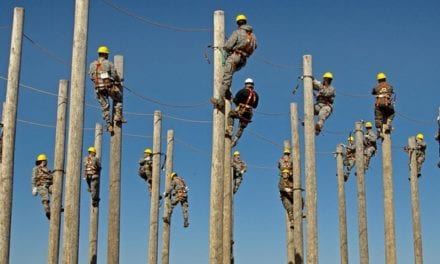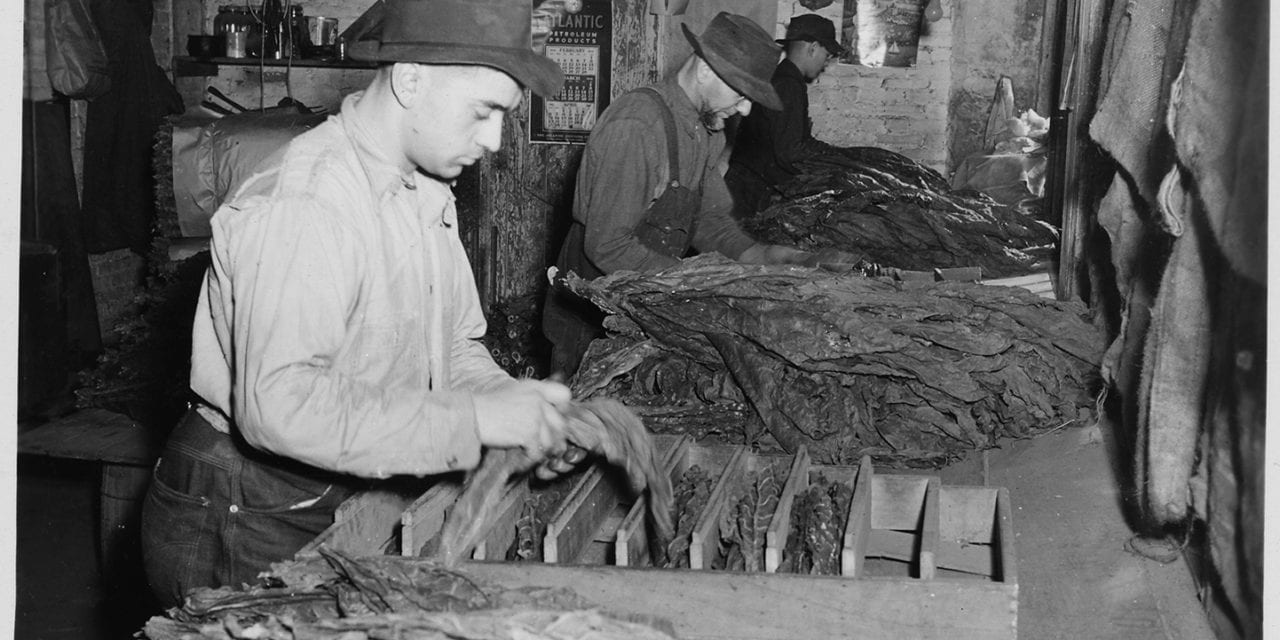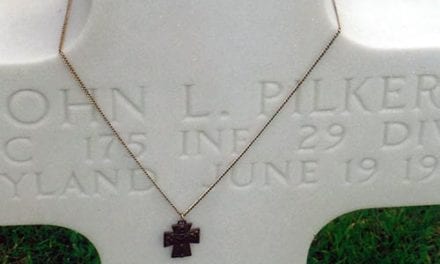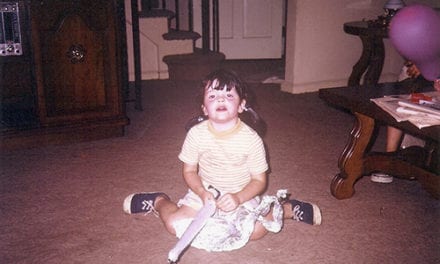I have taken the liberty of borrowing the title of Erskine Caldwell’s epic novel about childhood memories of tobacco growing. The tobacco cycle is a long one, lasting perhaps fourteen or fifteen months, and my father always grew tobacco, at least for as long as I could remember. These are my memories—what growing a crop of tobacco entailed amidst the days when family members, who did most of the work by hand, worked without pay.
A tobacco seed is a tiny speck about the size of a single grain of finely ground pepper. Even so, they were very expensive—farmers used as few of them as possible. Preparation for the new crop began in mid to late fall when a place was chosen to construct a “bed” in which to raise the seedlings. I later came to realize that the term was slang for what is now called a “cold frame”—used to extend the growing season of vegetables and other plants.
Herbicides were almost unknown at that time, and that fact played an intricate part of how tobacco plants were cultivated and grown. The location was usually remote. The structure could be located near the edge of a wooded area or where the soil had never been tilled. The width was usually six to eight feet wide, and the length would vary, depending on the number of seedlings needed to plant the new crop. The width restraint was tied to what widths of specialty cheesecloths were available—used both to shelter the crop and prevent unwanted seeds from invading.
Once the location was chosen, the area was completely cleared of underbrush, roots, and other vegetation—these byproducts were piled high in a designated area. If needed, additional combustible material was hauled in, whatever was sufficient to create a large, roaring fire. This might even include gathering unusable tires from around the farm or from local service stations. The process would be completed in the fall or winter, weeks in advance of the actual bed construction. Then it became a game of waiting for the opportune time to light the fire.
Timing was everything for the farmer. A day or two could be critical. These decisions were based on guesswork about the weather, derived from experience of the past and a variety of other factors, most of which were out of the control of the farmer. At the time, I never knew anything about what determined the timeline for the things my father did—I assisted in implementing his instructions when I was told what we were going to do.
Sometime, in the early spring, there would come the announcement. “We are going to burn the bed tonight.” The weather on that evening must be favorable, no precipitation or windy conditions that would impact kindling a hot fire or risk starting a wildfire that might endanger surrounding areas. Also, the weather for the next day or so must also be favorable to allow the immediate construction of the bed before weeds or other debris could contaminate the area.
Those were the short-term considerations, but there were also longer-term factors that somehow had to be taken into account. The seeds would be planted immediately and begin the germination process. To plant them too early was to risk frost. Wait too long and the plants would not be ready for optimal transplanting. It was truly juggling with nature.
After supper was finished, the fire was lit. For a boy, and even as I grew older, the sight of a roaring bond fire was a festive occasion. Once the roaring fire was fully ablaze, it was impossible to approach—the heat was tremendous. In advance of that evening chore, my father would cut an abundance of cedar boughs and piled them nearby. The job of every family member was to encircle the fire on watchful standby, with those cedar limbs ready in case the sparks should ignite anything in the surrounding area. Even as the fire began to diminish, after an hour or so of vigorously burning, the sparks continued to soar upward against the night sky, caught by wind currents, carried away like fireflies until they finally died and drifted back to earth.
Although I didn’t realize it at the time, the entire family participated in dangerous work. There were no fire trucks standing by to douse the flames, no neighbors to assist if there were an emergency, just the family—ready to do whatever was necessary to complete the task. The fire would begin to die, leaving hot glowing coals beneath white ash. At some point, my father would decide that the additional family members were no longer needed, and we would retire while he remained to the end, insuring the danger of a wildfire was over—sometimes all night, returning just in time for breakfast.
The next day would be a flurry of activity. Just as soon as the burned area had cooled, the process of removing the unburned material from the bed began. The reinforcement wires from the tires, still hot and smoldering, were dragged out, along with any unburned wood and brush. At some point, my father would take a shovel and carefully remove some of the clean white ashes, placing them in a metal bucket. Eventually, an area about ten feet wide by whatever length had been completely cleared of debris—only the ashes and parched, sterilized soil remained. This was the bed area, where the tobacco seed would be planted.
Logs had already been assembled just outside the area. They would be carefully trimmed and fit together, becoming a protective framework around the bed—providing a support to attach lengths of cheesecloth that would cover the entire area. This operation could require a day or more to complete, and speed was essential to preventing contamination of the sterile soil.
Assume that the bed was eight feet in width and about one hundred feet long (eight-hundred-square-feet). That would require about a tablespoon of seed for the entire area. The question is, how do you evenly distribute the tiny seeds over such a large area? That’s where the wood ashes came into play.
My father was a patient man, and patience is a characteristic of a good farmer—there was only one chance to do something right. The white ashes father had collected in the metal bucket would be carefully sifted and cleaned until it had the consistency of flour. The tobacco seed would be thoroughly mixed into the ashes, stirred carefully by hand to insure even distribution. The area inside the bed had been raked and smoothed until the dark soil also had the consistency of flour, and with enough loose soil for the seeds to be covered just barely below the surface.
Now came the tedious process of sowing the seeds—“broadcasting” was the term used for planting by hand. This was something only my father did—he would not allow anyone else to do the task. With seeded white ashes, he very slowly and carefully spread the mixture over the dark surface of the soil. It could take more than an hour to complete—patiently making sure that the seeds were distributed evenly—there were no bare areas, nor were there too many seeds in one spot. The contrast of the white ash-seed mixture, applied to the smooth dark soil, was his guide. When the small plants were ready to be replanted, it would be too late to rectify any mistakes in the sowing.
Finally, with the sowing complete, cheesecloth was stretched across the top, fastened to the log framework by driving nails through metal eyelets in the cloth. With that phase of the job done, it was a matter of waiting for Mother Nature to provide suitable weather for the germination—tiny dots of green when the first two leaves would eventually emerge from the soil.
~~~OOO~~~
The long process of waiting and watching for something to happen in the weeks to follow began—always questioning how well the seeds germinated. Were they planted evenly without being bunched together? Are there any insects to deal with? Do the plants need watering? A whole list of things could go wrong.
If the young plants did need water, that was a problem. With plants so tiny, anything stronger than a misty fog would knock them out of the soil—it took care and skill to nurture them toward maturity. All the while, they were tucked safely into the protective cold frame—a shade of thin fabric above them and hand-lain logs on the sides to break any cold wind that might threaten them.
Meanwhile, the field was being prepared for transplanting the young tobacco plants, called tobacco slips. My father was a stickler (a good southern term) for straight rows, and he often resorted to stretching a string, attached to stakes at each end, to serve as a planting guide. His brother had no such interest, and his crooked rows aggravated my father to no end. It didn’t help when his brother would remind him, “You can get more plants in a crooked row than you can in a straight one.” Regardless, planting the bare-rooted tobacco slips was backbreaking work.
A small hole was punched into the soil using a sharpened stick, often a broom handle. Then the roots and stem were carefully lowered into the hole, and dirt was pressed around the newly relocated plant. Tobacco slips could not survive without immediate watering because they possessed almost no root system. So a second person needed to follow behind the planter, and immediately water each plant.
Later, a metallic planter was developed that had a handle across the top and a trigger to open the jaws of the tapered end that was hand-punched into the soil. There was a water reservoir built into the contraption. A single plant was dropped into a tube and slid to the bottom. The tool was punched into the soil and the trigger was pulled, prompting the jaws at the bottom to open and let the plant drop into the ground along with water for the roots. The operator managed the tool with one arm. Of course, it took an additional person to drop the individual plants into the tube, and someone had to refill the water reservoir on a regular basis—a very labor-intensive crop to say the least, and that is why family members were almost always deeply involved in growing the crop.
The tobacco plant must be one of the most fragile plants in nature. With the least amount of pressure, the stalk or leaves snap off. That adds to the difficulty of growing tobacco. The process, which began with careful planning, timing, and sowing, moved to gently pulling the slips from the soil in the bed, carrying them gingerly to some cool shade adjacent to the field where they would be replanted, individually placing them softly into small holes, covering lightly with soil, taking care not to damage them with the water for their roots…every step an essential and risky act designed to ensure that the plants not only survived, but thrived and grew into mature specimens that could exceed six feet tall. But even at that mature stage, and during the harvesting process, plants remained just as brittle and susceptible to damage by rough handling.
As the plants took root and began to grow, it was an amazing process to observe—the speed at which the plants grew in height as broad leaves began to develop on the stalks. Some early cultivation was possible with a tractor while the plants were still small, but the leaves grew so quickly that they spread out between the rows where a tractor wheel would snap them off. The farmer had to resort to a plow pulled by a single horse or mule. Father walked behind, holding the plow-handles, guiding the animal carefully between the rows on each side. Again, stumble or misstep and plant damage would result. Eventually, it came down to manually cultivating the crop with a gooseneck hoe. Weeds weren’t all farmers had to contend with.
Pests ate crops—and one of the worst were hornworms, sometimes called tomato worms. These worms eat 24/7 and grow at an amazing rate. In fact, I have stood in the quiet of our fields, listening to the unmistakable munching of countless large worms. If an infestation is not stopped, hornworms will result in the leaves being stripped down to only stems—the crop could be a total loss.
Today, some might cringe to learn that the two most common insecticides we used to combat pests were arsenic and DDT, both long since banned. DDT was applied with a portable sprayer that I carried on my shoulder. It sprayed a fine mist onto the leaves of the plants. Arsenic was mixed with lime and applied with a hand tool called a dust-gun—it was pumped by hand to produce a fog of dust out the front. In both cases, the operator was fully exposed. Respirators were non-existent and there were no health concerns that I ever heard of. The chemicals were applied and remained active until there was a rain, which washed them from the plant—then reapplication began.
The natural maturity of tobacco plants brings further labor-intensive duties. As the plant grows taller, the junction of each leaf produces a small growth, think of it as a miniature tobacco plant just above the leaf. This is called a sucker. If left to grow naturally, it would develop and grow several feet in length. It saps the strength and vigor of the plant, diverting energy and nutrients from the primary leaf structure to the useless suckers. If allowed to grow unchecked, damage to the primary leaf structure occurs. The leaves must be protected, as they are the only reason the plant is being cultivated in the first place. How do you combat the suckers? There was only one way that I knew of.
It is the laborious job of walking down each row and physically breaking the suckers off, taking care not to damage the leaf growing just below. However, the suckers immediately begin to grow back, so in a week or so you are right back doing the same thing all over again. And remember, you are working with plants that have been sprayed with either arsenic or DDT. It is a miserable job, hot to begin with and the heavy leaves block out any breeze that might be stirring. Work during the cool early morning hours and your clothing will quickly be completely wet from the dew. Wait till the dew dries and then the burning sun and heat is something to endure. It is a personal choice between which misery you wish to contend with.
The tobacco plant has a natural wax that accumulates on the exterior. Perhaps there is nicotine as well—I never knew or asked. But while working in the field, this wax begins to accumulate on the skin. A layer builds up to the point that fingers won’t bend anymore, and hands stick to the plant making it almost impossible to effectively break off the suckers. Soap and water has little effect on removing the wax. The solution was home-cured pork. I would carry a piece in my pocket, and occasionally wipe the greasy piece of pork on my hands and arms, coating myself with a thin layer of pork fat. The fat prevents the wax from sticking to skin. Get the picture?
Tobacco plants, like all plants, do what nature designed them to do—grow tall, reaching toward the sun. Unrestrained, they become topped by a spray of blooms that are beautiful—pink blossoms with ribs of white segmenting the petals. If the plant is allowed to grow naturally tall, the leaves it produces are small and not worth much on the market. The solution is to cut the top off and prevent additional vertical growth. However, this also stimulates additional sucker growth, further increasing the pace of the manual labor needed to care for the crop.
Imagine walking down endless rows of tobacco plants, carefully avoiding breaking the broad leaves that now overlap each other in the row, trying to breathe in the sultry heat while reaching up as high as you can to cut the top off each plant with a pocket knife—pork-fat smeared shoulders ache until you think you can’t reach up again—fatigue all but ensures you will eventually cut yourself as every act becomes a herculean effort, and then there is the burning sting as tobacco juice penetrates the wound. It was a character-building, miserable experience—one that I shall never forget as long as I live.
~~~OOO~~~
As the plants mature into late summer and early fall, one might imagine that most of the labor is over. Not so. It is only the beginning of the second tobacco cycle, which includes harvest and final preparations for sale. During this time, the tobacco leaves ripen and turn from deep green to a beautiful yellow, beginning at the base of the stalk and gradually progressing upward. The stalk has matured, entering the ripening or dormant state, almost ready for harvest in Mid-August. This is a critical time because even after all the hard work, the quality of the leaves harvested isn’t determined until these last few days. Before we get into all that, there is the matter of Uncle Sam.
Tobacco had the benefit of government price supports for many years. In fact, price supports didn’t end until 2014, with a crop valued at some $1.5 billion dollars. The supports functioned as a minimum price that the grower would receive. If the market price fell below that minimum, the government provided the difference in a subsidy paid to the farmer. As a method to control the volume of tobacco being produced, farmers received an “allotment”—a cap on the maximum amount of land on which tobacco could be grown. For a small farmer, it might be something like .431 acres, or less than ½ acre of land. The allotment program did not end until 2004 when the government offered a buy-out with payments to the farmer over a ten-year period.
Allotment controls restricted the amount of land on which tobacco was grown, not the number of pounds produced. This became an incentive for farmers to find ways of producing the maximum amount of tobacco per acre. New plant varieties, better farming methods, and other means helped to substantially increase yields. To monitor and control the amount of land being used, Uncle Sam sent agents to each farm. They physically measured the amount of tobacco land being farmed, and then reported whether the farmer was in compliance. If not, the farmer would lose price supports and would have to sell crops at lower market prices.
Many farmers dreaded visits from agricultural agents, especially those farmers that intentionally overplanted. The agents might visit in June, when the crops were just beginning to grow, or as late as November, when the crop had long since been harvested. I observed the whole gamut of times when the audit was conducted, and some of the quirks that this system spawned.
The inspection was usually conducted by a two-man team, but sometimes by only one person. The measuring was accomplished by pulling a measuring “chain” around the perimeter of the field. With two-man teams, a flag on a metal peg would be placed at the starting point, and the chain would be stretched and marked in however many increments it took to reach the end of that side of the field. A flag was placed at the end of each length of chain, and agents counted the flags to know the total length of the field. The same thing was done for each side of the field—the total of all four sides were used to calculate the area.
Now, what happened if only one person arrived to complete the audit? He would have to begin the process at the starting point, affixing the chain to a post before walking the length of the chain where he would mark the spot with a flag. Then he would retrace his steps to release the chain from the previous point, and then go back where he had been, whereupon he would affix the chain to the next point and advance again. Measuring in this way was both time consuming and a lot of walking, so why not ask the farmer to help?
This was a welcome request and certainly complied with by some designated family member who would man one end of the chain. Here’s how it worked. Let’s say that the actual length of one side of the field was 500 feet, and the chain was 100 feet long. If the farmer were pulling the chain forward, he always placed the flag 10 feet beyond the end of the chain, resulting in the overall measurement being 10% less than it actually was. If he were assigned to the back of the chain, he edged 10 feet forward while the agent pulling the chain advanced, resulting in the same 10% reduction. I can’t say the agents didn’t know what was happening—they were usually locally contracted and known in the community. It was in their best interests to have temporary blindness.
If the agents calculated the amount of area was in excess, a portion of the crops would need to be destroyed to bring the farmer into compliance. All the work that went into the excess crops was for nothing—heartbreaking, even if the farmer knew he had overplanted.
The farmer chose the area of the field that had the poorest quality plants. The agents defined the excess area and waited while the farmer cut down / destroyed that portion of his crop, or the agents told the farmer to leave the stalks of the destroyed plants visible so that they could return later to verify that they had been destroyed. If the plants were young and immature, their leaves were of no value so the farmer would destroy the crop as directed. If mature enough that the leaves could be marketed, the leaves were stripped and taken to some discrete barn for curing, and then marketed with the remainder of the crop. The stalks remained in the field as “evidence” that the overage wasn’t harvested.
One year the measurements were not made until after the crop was harvested, in the barn, and almost ready for market. The agent did the measurement, counted the stubs of the stalks remaining in the ground in the overage area, and my father had to take that many stalks of tobacco out of the barn and destroy it in the agent’s presence. Again, heartbreaking any way you view it.
Now back to the tobacco crop. Insects have been managed, weeds controlled, suckers removed regularly to allow full growth of the plant, blooms on top of the plant removed, and the deep green leaves, some of which are 30 or more inches long and 18 inches wide are turning from a deep-dark green to varying shades of yellow. Harvest time approaches rapidly and a new flurry of activity is about to begin.
~~~OOO~~~
The dangers of tobacco production are not limited to insecticides, nicotine exposure, or extreme weather. There were other dangers from harvest onward. Burley tobacco is an air-cured tobacco, meaning that after it was harvested, it was hung in an open-air curing barn for several weeks until all of the green leaves had dried to a golden brown color. But first we needed to get the plants to the curing barn for drying.
Remember, a prime tobacco plant is upwards of six feet tall and loaded with broad leaves. The base of the stalk could be 2-3 inches in diameter, depending on the size of the plant. That is a lot of weight, which must be handled delicately throughout the harvest process. When a stalk was cut (harvested), there had to be some method to get it to the barn for curing. “Sticking” is the method that I am most familiar with. Precut strips of wood, about an inch in diameter and 5-6 feet long, are scattered between the rows of plants in advance of harvest. An instrument called a “spear” (some 6-8 inches long) is a hollow cone of metal with an open base a little wider than the wooden stick that tapers to a needle sharp point on the other end. The tobacco “stick” is either driven into the ground in advance or picked up and held in one hand by the harvester doing the spearing. The metal spear is placed over the upper end of the stick to receive the harvested tobacco stalk.
There may be either one or two harvesters, depending on the method. Where there is one, the harvester jabs the stick (with spear on top) upright into the ground, then cuts the plant at the base. The stalk is heavy. The harvester uses leverage and the weight of the plant to gently swing it into the air, allowing the base to fall downward, eventually resting it on the tip of the spear and stick. This is an artful process—one smooth motion—and an experienced harvester will then press the stalk downward so that the spear splits the middle of the stalk, allowing it to slide down the stick, half of the stalk on each side. If the plant is too close to the cut end of the stalk, it will split and interrupt the motion. The plant then has to be manhandled and forced onto the spear a second time. If done correctly, the stalk will only split a few inches and, with the base intact, remain skewered on the stick. Depending on the size of the plant, this may be repeated till there are 4-6 plants evenly spaced on the stick—the balanced arrangement of the plants holding the entire skewer upright. Like I said, it’s an art.
With two harvesters, the process was slightly different and certainly more dangerous. One harvester wielded one of the sticks, jabbing it into the ground while his partner’s stick remained half finished—ready for more stalks. One harvester cut plants at the base and handed them to the person doing the spearing—the receiver must, in such a manner, swing each plant up and then downward onto a spear as before. If one harvester’s motions were an art, two in tandem was a symphony of skillful beauty. Most commonly, the same team would always work together as they were experienced in each other’s motions.
The person doing the spearing was always at risk. Each time a stalk was speared, his body made a downward motion within inches of the sharp end of the spear. One mistake could be fatal if the spear penetrated the throat. The necessary force needed to press the plant through the spear and onto the stick meant that any injury would likely be severe.
Most experienced workers placed the spear on the stick and held it until the plant was secured. But there was always room for a mistake, a careless slipup due to fatigue, inattention, or a reflex movement in response to stinging insects. Family members and casual labor from the surrounding community performed this very dangerous work.
There was a short window of time to move the product to the curing barn before damage occurred—in the form of blistering caused by sun exposure. If blistering occurred, the price of the finished product was reduced accordingly. Depending on the day, there might be as little as an hour to move the plants into the shade. A second or third team would haul the cut stalks to the curing barn, allowing a little time for the plants to wilt and become less brittle before hanging the inverted stalks on previously constructed rows of poles, which began at the roof of the barn and were layered down to the last row (about 8 feet from the ground).
The load of tobacco, still attached to the harvesting sticks, was pulled into position within the barn. Someone would climb to the top layer of poles near the roof (25’ high in our barn). A second person stood on the layer of poles just below, and so forth, until each layer of poles were manned by someone without any safety gear. The process began—each helper handing each weighty stick upward to the next person, filling each vertical layer from the top down. The workers walked backwards on the extended poles during this process so that the plants were always handed upward. One slip, or rotted pole could result in one or more workers falling into a wagon filled with sharpened sticks—being impaled was a real concern. Then the process began again in another section, proceeding this way until the wagon was empty and ready to be reloaded.
~~~OOO~~~
Once the crop was in the barn, it was a matter of waiting for Mother Nature to cure the tobacco as it dried in the open air. This took several weeks, and the unmistakable smell of curing tobacco was always evident downwind.
The tobacco leaves may be brittle during the growing season, but they can be very pliable and resilient after curing—if there is sufficient moisture in the air. When the atmosphere is dry, so are the leaves, and their rustling as breezes passed through the barn could be heard for some distance. But on humid days, the barn was silent—the leaves hung motionless and limp.
Eventually the leaves all turned a deep amber brown. The stems and leaf veins were the last to completely dry. Father would decide when the process was finished. If the leaves weren’t completely cured, mold would develop on them, and buyers would pay very little for the crop. The judgment and experience of the farmer was critical—it was imperative to know exactly when the crop was ready for processing.
Now a word about processing tobacco for market. Remember, the stalks were filled with leaves, and they hung on sticks from the vertical racks in our barn. Only the leaves were sold—the stalks were of no value as far as the tobacco market was concerned. We had to get the leaves to market in some organized manner. The tobacco plants needed to be removed from the high racks of the barn and then separated from the sticks that pierced each plant before leaf removal could begin. We removed the sticks of tobacco from the poles in the barn, beginning with the lower sections and proceeding upward. The method was simple, remove each one from the rack and carefully drop it to the ground, making sure no one below is skewered by the falling projectiles. At this point, moisture in the air is critical—too dry and the leaves shatter when they hit the ground, resulting in a loss. Father chose a humid day, when the leaves were resilient and would remain undamaged.
The danger of falling while removing tobacco from the barn racks was just as real as it was while precariously hanging the weighty plants. I am somewhat chagrinned, while writing this section, about something that happened during my early school years. I must have been in the 5th or 6th grade, and one of my classmates was doing just what I described, standing high on the barn poles, dropping tobacco to the ground below. Tragically, he slipped and fell onto one of the sharpened sticks, which penetrated his neck and killed him instantly. I attended the funeral, along with my parents. But try as I might, I cannot recall any warnings or extra precautions after his death. Nothing changed. It was just something that was accepted, and life moved on.
~~~OOO~~~
Once the plants were removed from the sticks, a worker striped the leaves from the stalk and separated them onto a table—each type of leaf had its own value. The stalk was discarded. The long table was piled with segregated leaves—and someone working behind the table would tie the tobacco leaves into hands.
The value of each leaf was based on its position on the plant. My father segregated the leaves into four categories: The Lugs, sometimes-called Flyings, which are on the section of the plant closest to the ground. They are premium quality, thin and light tan but often ragged and small compared to the other leaves—even so, they carry a premium price and are always treated with extra care. The next category (leaves just above the lugs) he called Brights. These leaves were full sized and, as the name implied, were a lighter color of medium tan. The next section he called Reds, and true to his naming technique, they were a dark-red color, also with large leaves. The final category were Tips (the very uppermost leaves on the plant). They were also dark-red in color, but shorter in length, and they generally carried the lowest price.
When tobacco buyers purchased tobacco, it was by lots. A “lot” was a quantity of tobacco separated into a shallow basket constructed of narrow wooden slats called a “flat.” A lot might be only a few pounds of tobacco, or it might be hundreds of pounds. It wasn’t a matter of piling a specific quantity of tobacco leaves on the flat and then sending to market.
Creating hands of tobacco was achieved using a very old method called “handing”—gathering tobacco leaves in one hand with the stems evenly spaced. The stem ends were bound securely with another tobacco leaf that held the bundle together. The size of the hand depended upon the person constructing the bundle. There was no standard size.
While the process of stripping leaves and creating hands of tobacco might seem like an easy, mundane process, it wasn’t, especially when taking the working conditions into consideration. By the time the leaves were ready for processing, it was well into November—the temperature became a factor, especially since ideal processing was done when the air was humid. Add a little breeze blowing through the open hallways of the barn, and it didn’t take long before the chill permeated my bones. It was as physically tiring as working in the hot field when the crop was being harvested.
By the way, remember that arsenic and lime and DDT that was used to kill the hornworms? If it didn’t rain between the last application and the harvest, the residue remained on the plants. Once the leaves were removed, visual evidence of the powder resided on the leaves, but also drifted in the air around the workers. The drifting dust caught stray sunrays through the slats in the barn as the leaves were fanned by the stripping and tying motions. The residue remained on the leaves when the tobacco was sold and taken for processing. We breathed it all, and I imagine the consumers did too.
~~~OOO~~~
After all the tobacco was tied into hands, and packed on flats with the tied ends facing outward, the crop was ready to sell. The next step was to haul it all to market.
This is worth a brief explanation as it was an unusual system to say the least. There were privately owned tobacco warehouses scattered around the area, serving as storage sites. They facilitated the buying and selling of the crop in exchange for a percentage of the sale. Tobacco companies sent their purchasing agents to these warehouses during pre-scheduled sales. There were often thousands of flats of tobacco lined up for sale, all grouped together by farmer or owner. The sale began with an auctioneer walking down the line of flats, announcing the owner and type of leaves in each lot. Buyers trailed, inspecting the quality of the crop by pulling out one or more hands from the flat, visually inspecting the quality of the leaves and making offers on whatever flats or type of leaves that were of interest. It was up to the owner to either accept or decline the offer. If the offer was declined, then the tobacco had to be removed from the warehouse and the process repeated another day.
With hundreds of long rows of pallets, the sale proceeded down one row and up the next. Most farmers were eager to have their crops at the early sales, which supposedly brought higher prices, so the warehouses filled up quickly. The buying would end after a few hours, and there would still be plenty of tobacco remaining. It would remain until the next sale, when the procession would begin from where they ended previously.
There was one aspect of the “sale day” that I didn’t understand and was too young or uninterested to inquire about. Most of the farmers arrived for the sale a day ahead of time. It was not a matter of security—no one could have stolen flats of tobacco. I believe it was more of an annual social occasion—they had an excuse to get away from family, eat restaurant hamburgers, and generally socialize with each other—swapping stories, or lies as the case may be. I was never invited. It was an adult occasion, a celebration of sorts, and my father always attended. He seemed to have had a good time in the process.
So the tobacco had been sold and the precious cash payment received. Plenty of new work had already begun—new labor devoted to the next crop—the tobacco beds, or cold frames, had to be moved to a new location, brush and combustible material piled high, ready to burn in the approaching spring. This was our road—the road that our tobacco took to get to market, a long and arduous route filled with gallons of sweat and pockmarked with dangerous backbreaking labor. It was as much a family road as a tobacco road, as much a cherished memory of my father as it was an art form that nourished us all.






















